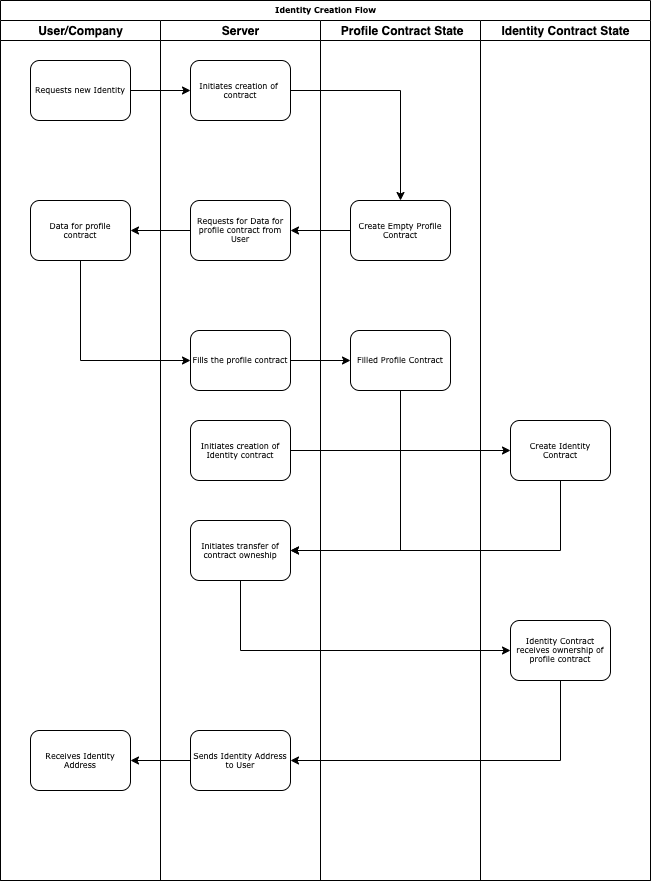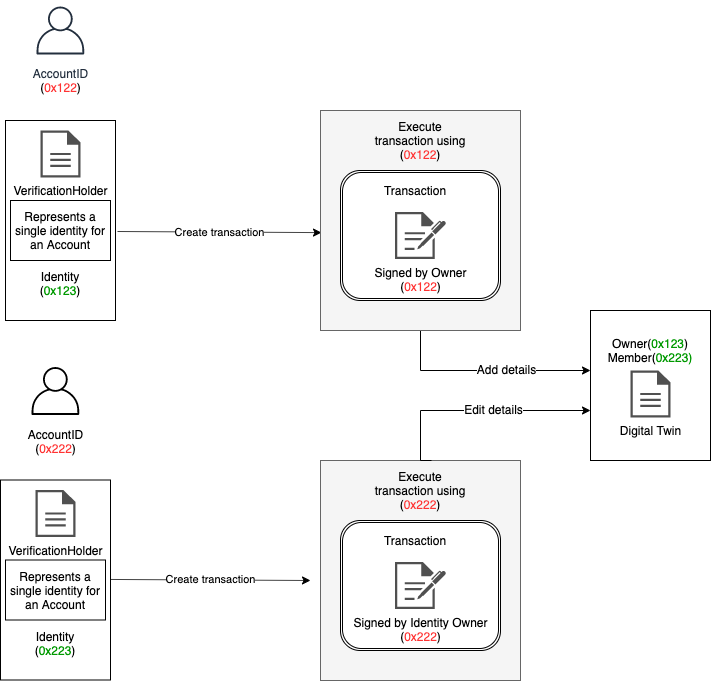Identities
Identities can be considered as virtual accounts for a user. Identities are basically contracts which are bound to a profile and controlled by an externally owned account. An account can have multiple identities and a single identity can also be controlled via multiple accounts.
Create Identities
A user requests for an identity from the evan.network. The evan.network server prepares two contracts. One being an empty profile contract which is sent to the user to fill data while the second contract is an identity contract. Once the user has prepared the profile data and sent it to the server, the server writes the data to the profile contract and binds this to the identity contract. After the binding process the server removes itself from the owner and member role of the identity and the ownership is transferred to the user.

Relation between Account and Identities
The following figure represents the relationship between a user and the identities. A user has his private keys off-chain which he uses to access his account on chain. The on-chain account owns multiple identities which have been created via the identity creation flow described in the previous section. As mentioned before multiple accounts can also control a single identity. This is done by giving other accounts permissions to the identity. These identities are used on the evan.network as the actors for performing transactions.

Furthermore, The identities for each account are available in an identity registry. Each identity is mapped to it’s respective account.

Transactions using Identities
Recall that the identity contract is linked with the profile contract. As depicted in the figure the verification holder represents a single identity for an account and the identity registry maps the identity with its respective account. When performing a transaction using an identitiy the transaction is created by the identity itself but the transaction is signed and executed using the account that owns the identity. Using this approach the transaction is performed via the identity on the chain.

Home |
FAQ |
Github Repo |
Gitter Community |
Website |
Blog |
API docu |
UI docu |
Imprint
 This work is licensed under a Creative Commons Attribution-ShareAlike 4.0 International License.
This work is licensed under a Creative Commons Attribution-ShareAlike 4.0 International License.